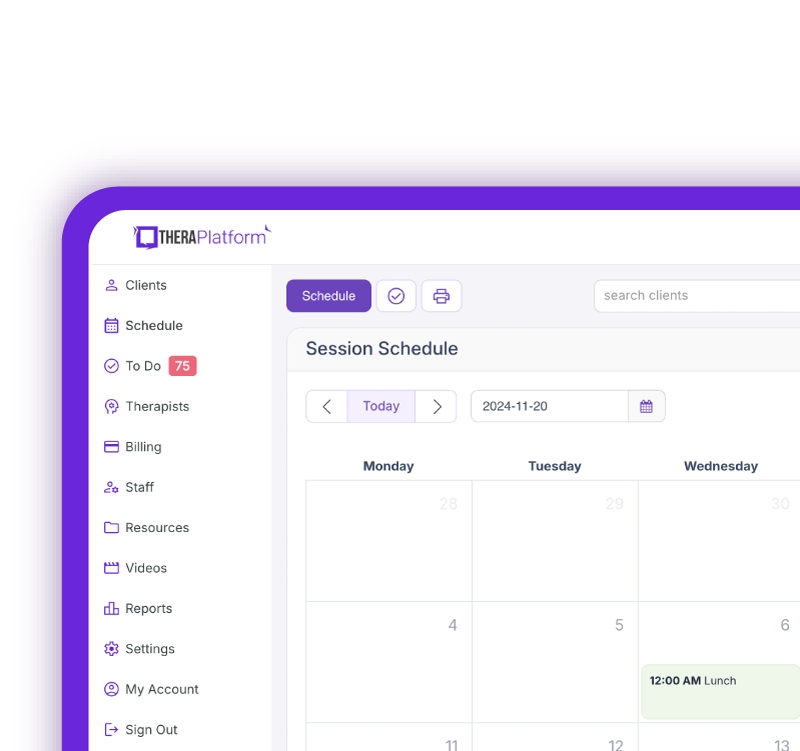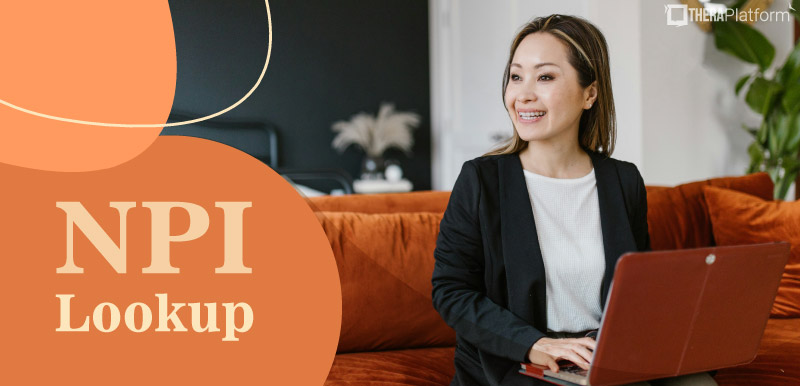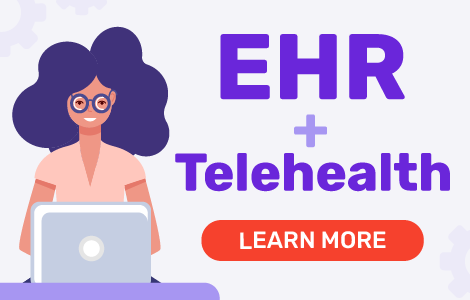GN modifer

The GN modifier is a critical tool in medical billing that indicates a service is related to speech-language pathology. This billing code addition may be small, but it is significant in ensuring services are accurately identified and that the therapy service claim is processed.
Summary
- The GN modifier is used in medical billing to indicate that a service is related to speech-language pathology, ensuring accurate claim processing and reimbursement.
- It must be applied to various speech therapy services, including evaluations, individual and group therapy, and caregiver training, particularly for Medicare claims.
- Failing to use the GN modifier when required, especially for Medicare Part B claims, can result in payment delays or denials, increasing administrative burdens. Enrolling in an insurance billing course for therapists can help providers enhance their knowledge.
- Speech-language pathologists should verify payer-specific requirements, maintain thorough documentation, and correctly apply the GN modifier to avoid billing errors and ensure smooth reimbursement. By leveraging an EHR like TheraPlatform for efficient documentation and claim submission, therapists can improve compliance with HIPAA and payer guidelines, ensure timely reimbursement, and enhance overall billing accuracy for telehealth services.
→ Click here to enroll in our free on-demand Insurance Billing for Therapists video course [Enroll Now]
What is the GN modifier?
The GN modifier is a Healthcare Common Procedure Coding System (HCPCS) Level II modifier that consists of a two-character code. According to the U.S. Centers for Medicare & Medicaid Services (CMS), providers must use the modifier -GN “to identify services delivered personally by a Speech-Language Pathologist or under an outpatient speech-language pathology Plan of Care.”
Here’s what speech-language pathologists should know about using the GN modifier in documentation and billing, including when to use it, the significance of the modifier, how to apply it, and recommended best practices.
Streamline your insurance billing with One EHR
- Claim batching
- Auto claims
- Automated EOB & ERA
- Real-time claim validation
- Real-time claim tracking
- Aging and other reports

When to use the GN modifier
The GN modifier is applicable to a range of services in the area of speech-language pathology. This includes both evaluations and treatment sessions. SLPs should be aware of when and how to apply the GN modifier in order to ensure compliance with requirements of payers.
Medicare is one payer that specifically mandates the use of the GN modifier for claims submitted involving speech-language pathology services. Claim denials or delays in payment can result from a failure to use the GN modifier.
The GN modifier is used in billing common procedures in the field of speech-language pathology, including:
- Individual therapy sessions
- Group therapy sessions
- Speech and language evaluations
- Augmentative and Alternative Communication (AAC) Evaluations
- Swallowing evaluations and therapy sessions
According to the American Speech-Language Hearing Association (ASHA), the Centers for Medicare & Medicaid Services (CMS) will cover caregiver training sessions, including the following CPT codes, when the GN modifier is used:
- 97550 Caregiver training, initial 30 minutes
- 97551 Caregiver training, each additional 15 minutes
- 97552 Group caregiver training
Watch this video to learn common insurance billing struggles and solutions
→ Start My Free Trial
→ Start My Free Trial
Importance of the GN Modifier
The GN modifier is important for speech-language pathologists to understand and use when applicable, particularly when submitting claims to Medicare.
Using the GN modifier allows SLPs to help insurance providers accurately attribute services to speech-language pathology. This serves as a clear indication that the claim pertains to a service that has been provided by a Speech-Language Pathologist.
Several insurance payers, such as Medicare Part B, require use of the GN modifier to process claims. If the GN modifier is omitted, the result can be a claim rejection or payment delay. Issues like this can cause administrative burdens associated with refiling claims.
Speech therapists can reduce the risk of these issues and facilitate faster, more reliable reimbursement by using the GN modifier appropriately when billing services.
How to apply the GN modifier
Applying the GN modifier correctly is simple, but requires attention to detail. Incorrectly applying the GN modifier or omitting the GN modifier can result in complications such as denied claims.
Placement of the GN modifier
The GN modifier should be attached to the appropriate CPT codes that correspond to services being billed.
For example:
- 92507 (Speech therapy) + GN modifier= 92507-GN
- 92610 (Swallowing therapy) + GN modifier=02610-GN
Combining with other modifiers
In certain cases, the GN modifier may be combined with other necessary modifiers.
For example:
- Modifier KX should be applied with a claim that exceeds the Medicare therapy threshold but is medically necessary.
- For example: 92507, GN, KX may be used to indicate an individual speech therapy session when billing Medicare in a case in which the client continues to demonstrate a medical need for therapy services despite the beneficiary having exceeded the KX modifier threshold.
- Modifier 59 may be used in addition to the GN modifier to indicate distinct procedural services.
Therapists should list the modifiers in the correct order as specified by the payer.
Practice Management + EHR + Telehealth
Mange more in less time in your practice with TheraPlatform

Best practices for using the GN modifier
SLPs should follow best practices for using the GN modifier in order to maximize efficiency and accuracy in billing.
Check payer policies: Medicare universally requires the use of the GN modifier for all services within the area of speech-language pathology. Because not all private insurance companies have the same requirement, it is essential to verify payer-specific guidelines before submitting claims.
Accurate Documentation: SLPs should maintain detailed records to support the billed services.
This includes:
- Thorough and precise session notes.
- Objective data in evaluations.
- Clear justification for the therapy being recommended or provided.
Thorough, accurate documentation can provide the necessary evidence to support claims in the event of an inquiry or audit.
When it comes to accurate, efficient billing, speech-language pathologists play a critical role. It is essential for SLPs to remain familiar with billing codes and modifiers such as the GN modifier to facilitate accurate reimbursement for services.
Remaining informed about updates on payer-specific guidelines and changes in billing policies can help SLPs maintain compliance. Therapists can refer to sources such as Medicare guidelines, payer-specific manuals, and professional associations (such as ASHA) to stay up-to-date in this area of practice.
The GN modifier is an important tool for speech-language pathologists. By using it correctly, therapists can help ensure accurate claim processing, minimize the risk of denials, and support the overall financial health of their therapy practice. Billing can be overwhelming, but following best practices and staying informed can help SLPs navigate complexities of billing with ease.
How EHR and practice management software can save you time with insurance billing for therapists
EHRs with integrated billing software and clearing houses, such as TheraPlatform, offer therapists significant advantages in creating an efficient insurance billing process. The key is minimizing the amount of time dedicated to developing, sending, and tracking medical claims through features such as automation and batching.
What are automation and batching?
- Automation refers to setting up software to perform tasks with limited human interaction.
- Batching or performing administrative tasks in blocks of time at once allows you to perform a task from a single entry point with less clicking.
Which billing and medical claim tasks can be automated and batched through billing software?
- Invoices: Create multiple invoices for multiple clients with a click or two of a button or set up auto-invoice creation, and the software will automatically create invoices for you at the preferred time. You can even have the system automatically send invoices to your clients.
- Credit card processing: Charge multiple clients with a click of a button or set up auto credit card billing, and the billing software will automatically charge the card (easier than swiping!)
- Email payment reminders: Never manually send another reminder email for payment again, or skip this altogether by enabling auto credit card charges.
- Automated claim creation and submission: Batch multiple claims with one button click or turn auto claim creation and submission on.
- Live claim validation: The system reviews each claim to catch any human errors before submission, saving you time and reducing rejected claims.
- Automated payment posting: Streamline posting procedures for paid medical claims with ERA. When insurance offers ERA, all their payments will post automatically on TheraPlatform's EHR.
- Tracking: Track payment and profits, including aging invoices, overdue invoices, transactions, billed services, service providers.
Utilizing billing software integrated with an EHR and practice management software can make storing and sharing billing and insurance easy and save providers time when it comes to insurance billing for therapists.
Streamline your practice with One EHR
- Scheduling
- Flexible notes
- Template library
- Billing & payments
- Insurance claims
- Client portal
- Telehealth
- E-fax

Resources
TheraPlatform is an all-in-one EHR, practice management, and teletherapy software built for therapists to help them save time on admin tasks. It offers a 30-day risk-free trial with no credit card required and supports different industries and sizes of practices, including speech-language pathologists in group and solo practices.
More resources
- Therapy resources and worksheets
- Therapy private practice courses
- Ultimate teletherapy ebook
- The Ultimate Insurance Billing Guide for Therapists
- The Ultimate Guide to Starting a Private Therapy Practice
- Mental health credentialing
- Insurance billing 101
- Practice management tools
- Behavioral Health tools
Free video classes
- Free on-demand insurance billing for therapist course
- Free mini video lessons to enhance your private practice
- 9 Admin tasks to automate in your private practice
References
Atluri, H., & Thummisetti, B. S. P. (2023). Optimizing Revenue Cycle Management in Healthcare: A Comprehensive Analysis of the Charge Navigator System. International Numeric Journal of Machine Learning and Robots, 7(7), 1-13. DOI: https://injmr.com/index.php/fewfewf/article/view/37/8
Burks, K., Shields, J., Evans, J., Plumley, J., Gerlach, J., & Flesher, S. (2022). A systematic review of outpatient billing practices. SAGE Open Medicine, 10, 20503121221099021. DOI: https://journals.sagepub.com/doi/full/10.1177/20503121221099021
Dong, H., Falis, M., Whiteley, W., Alex, B., Matterson, J., Ji, S., ... & Wu, H. (2022). Automated clinical coding: what, why, and where we are?. NPJ digital medicine, 5(1), 159. DOI: https://www.nature.com/articles/s41746-022-00705-7



